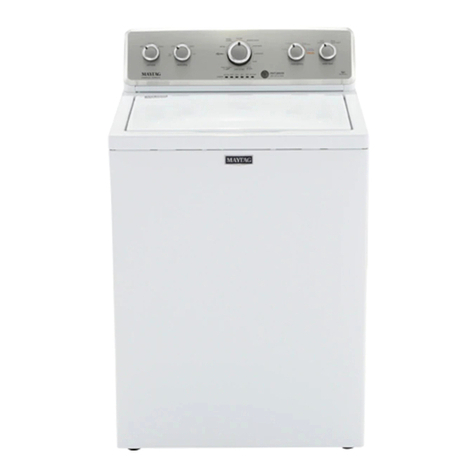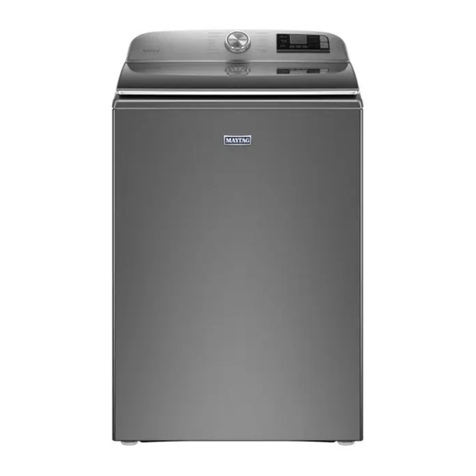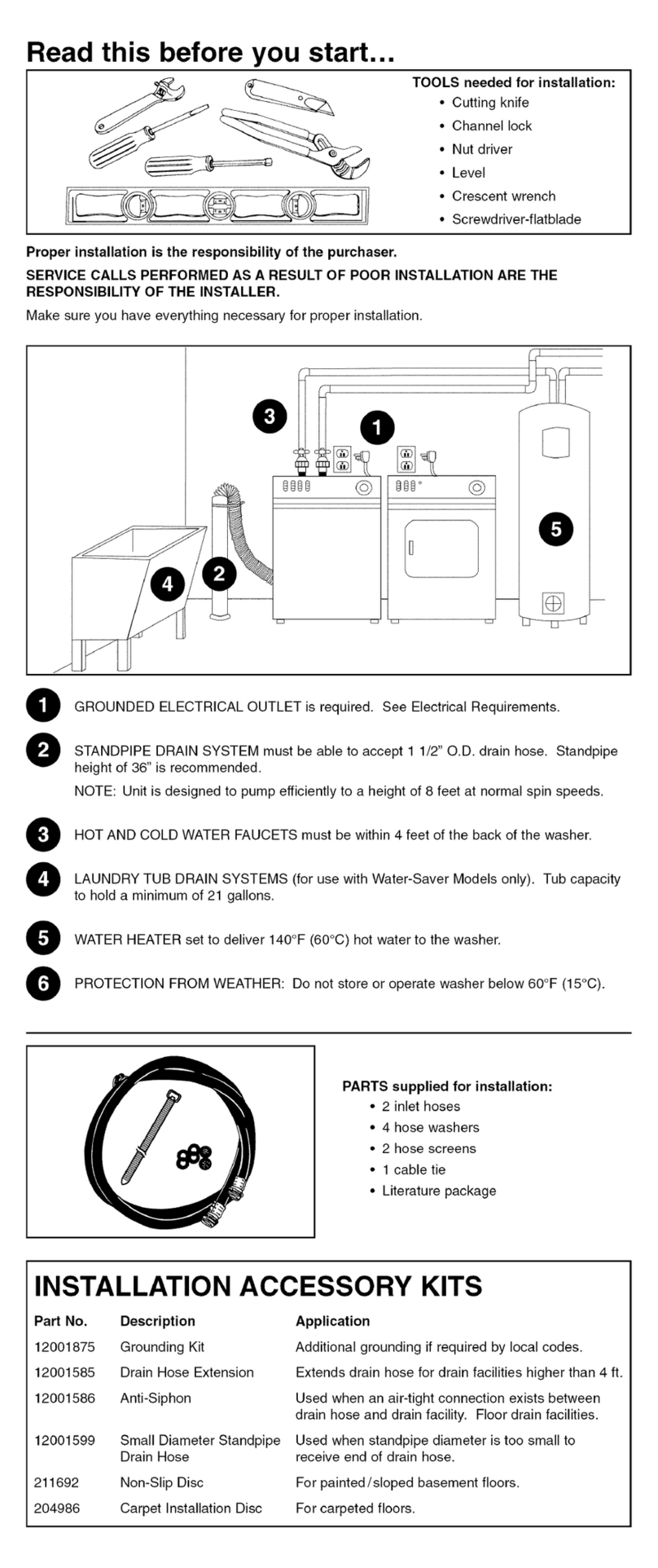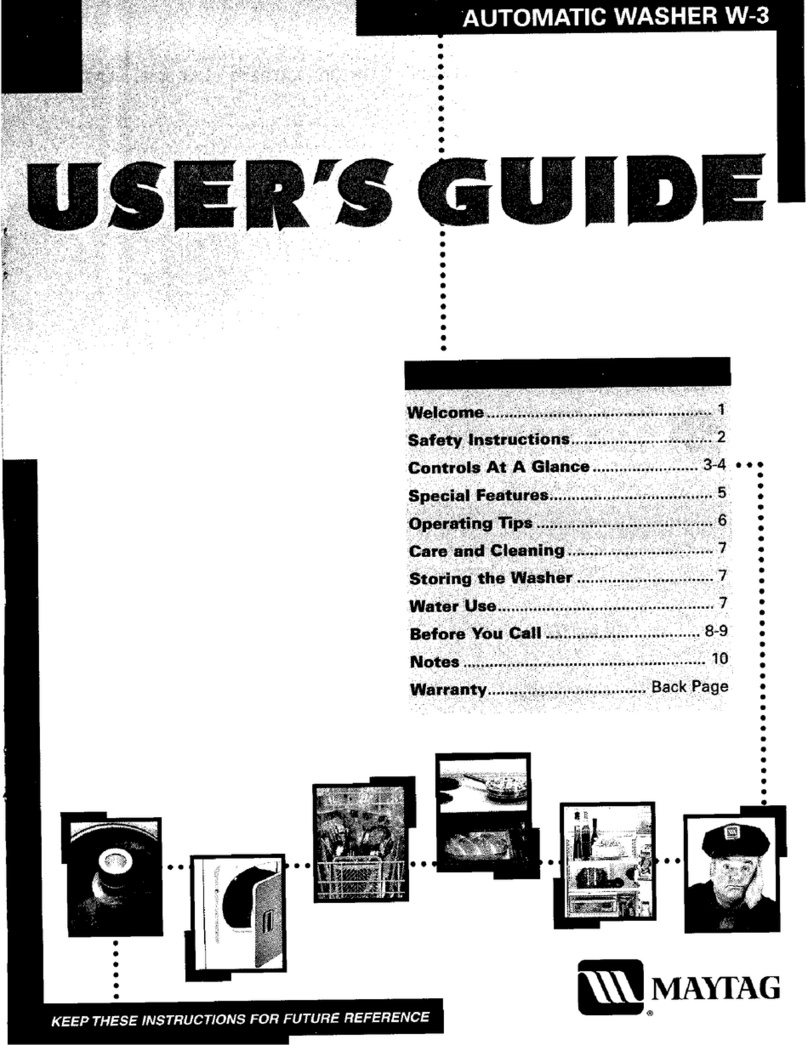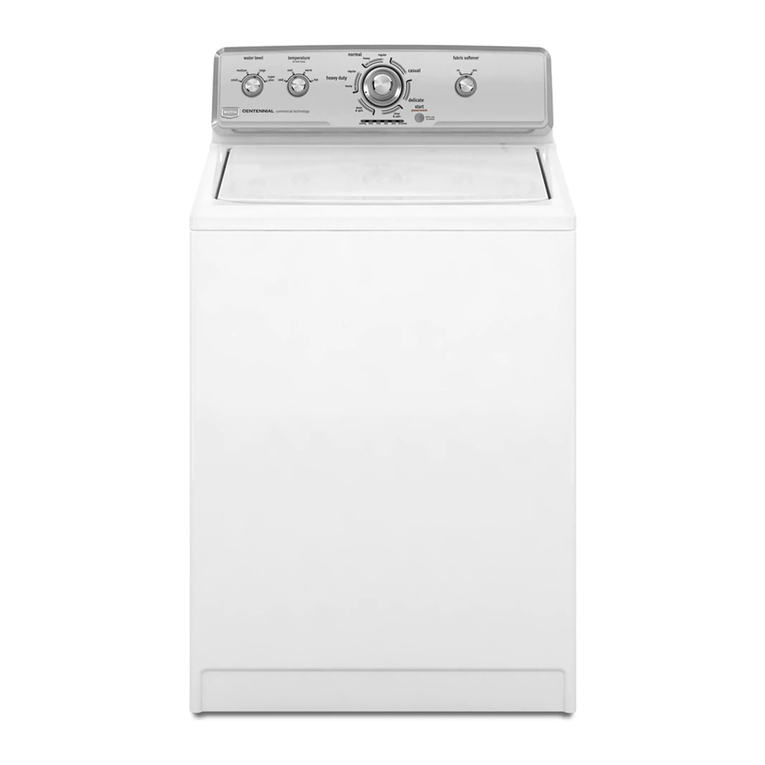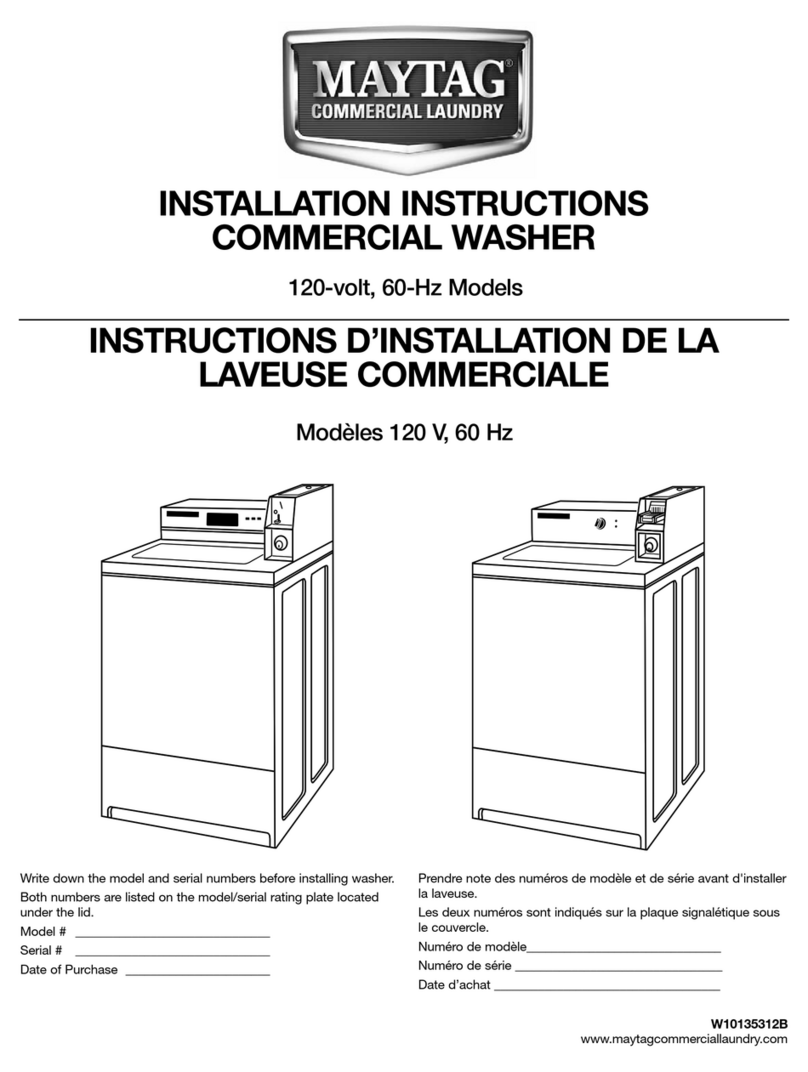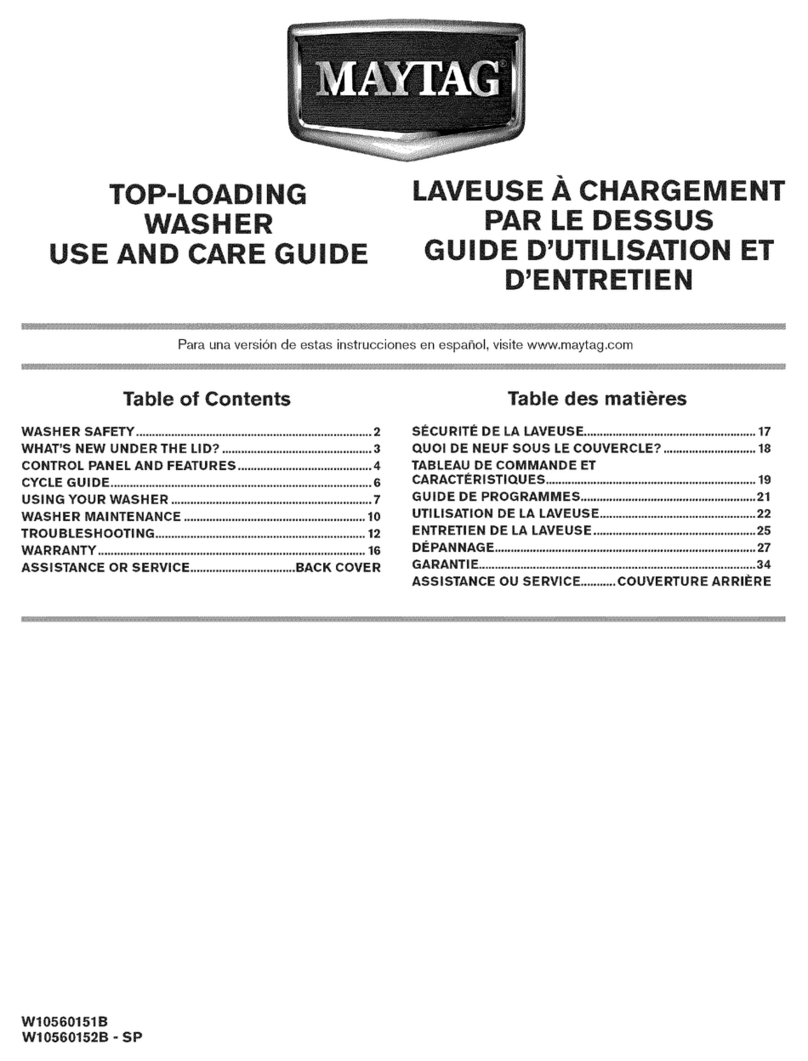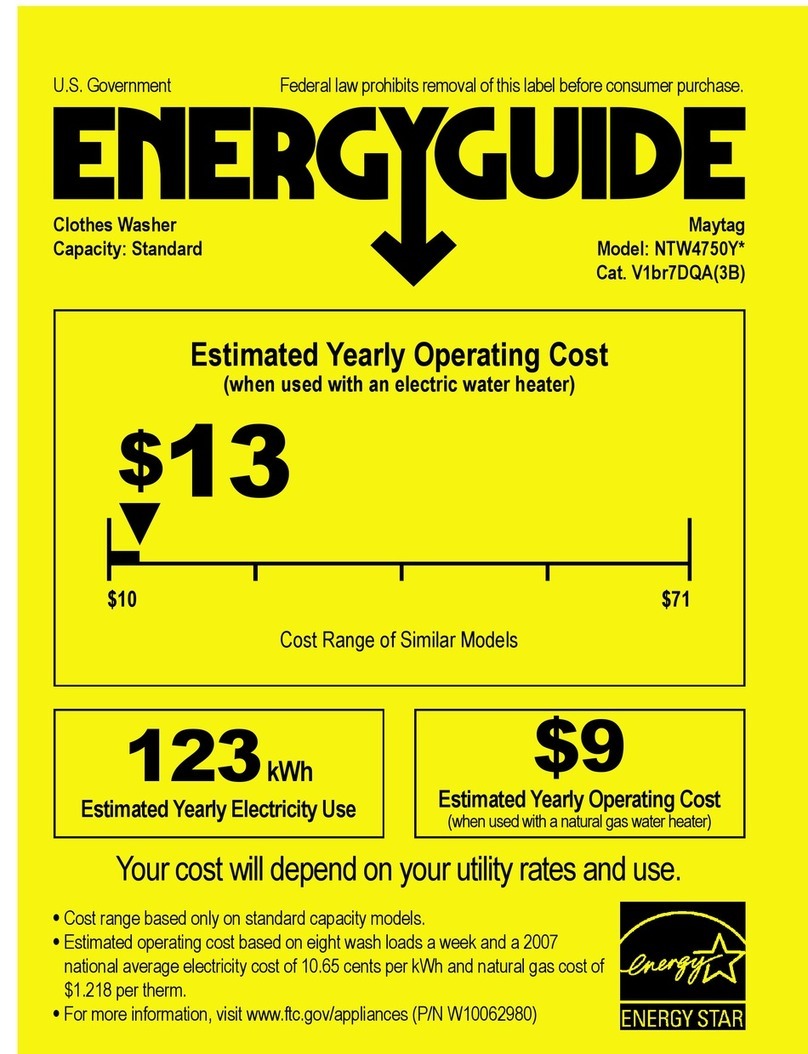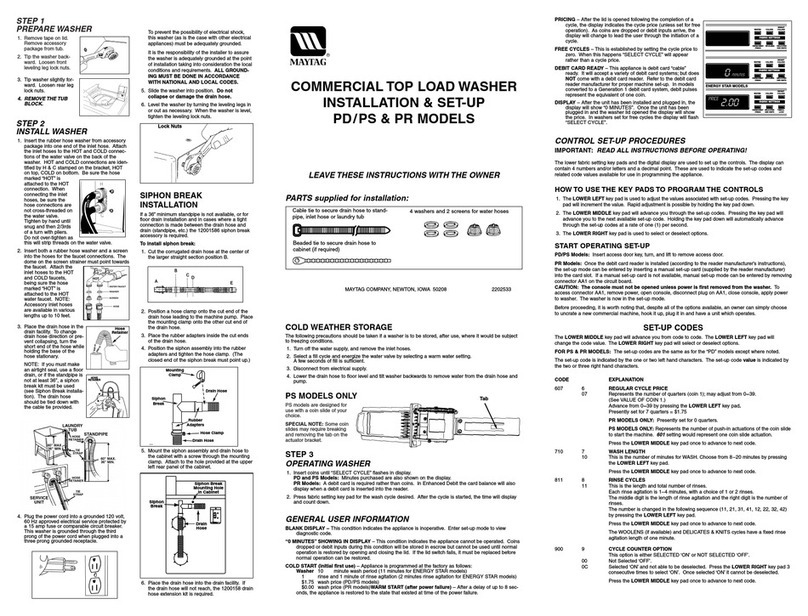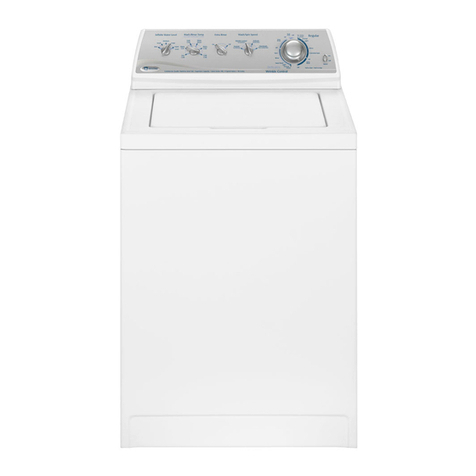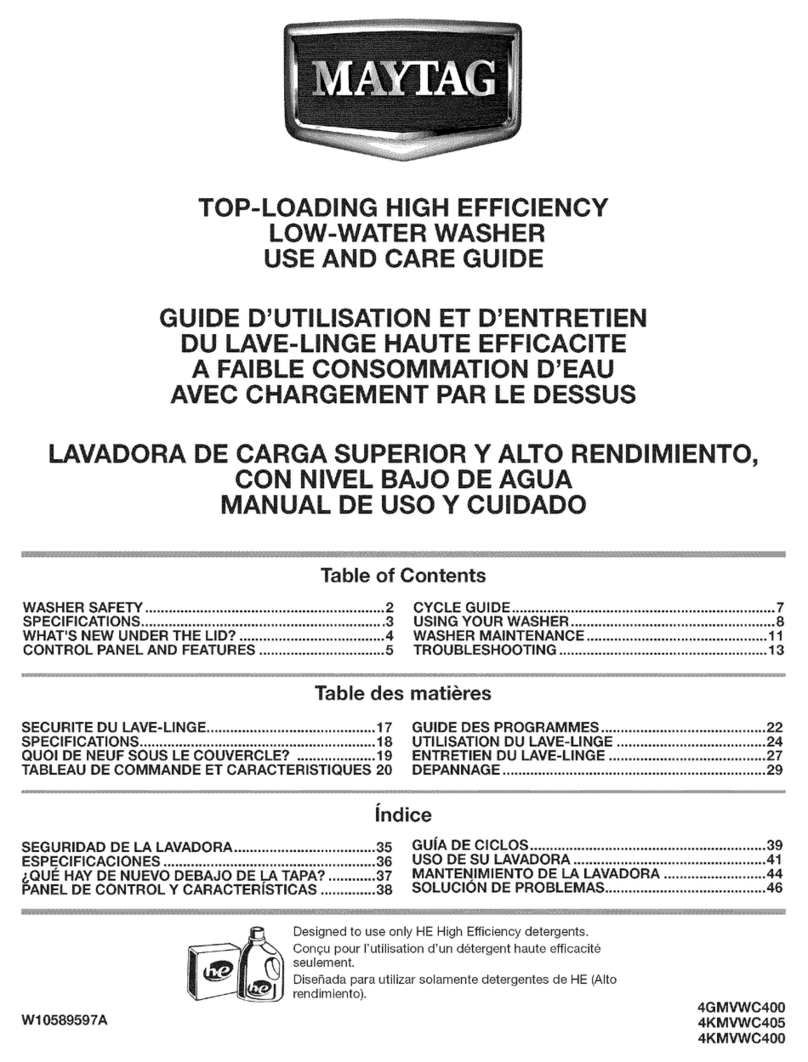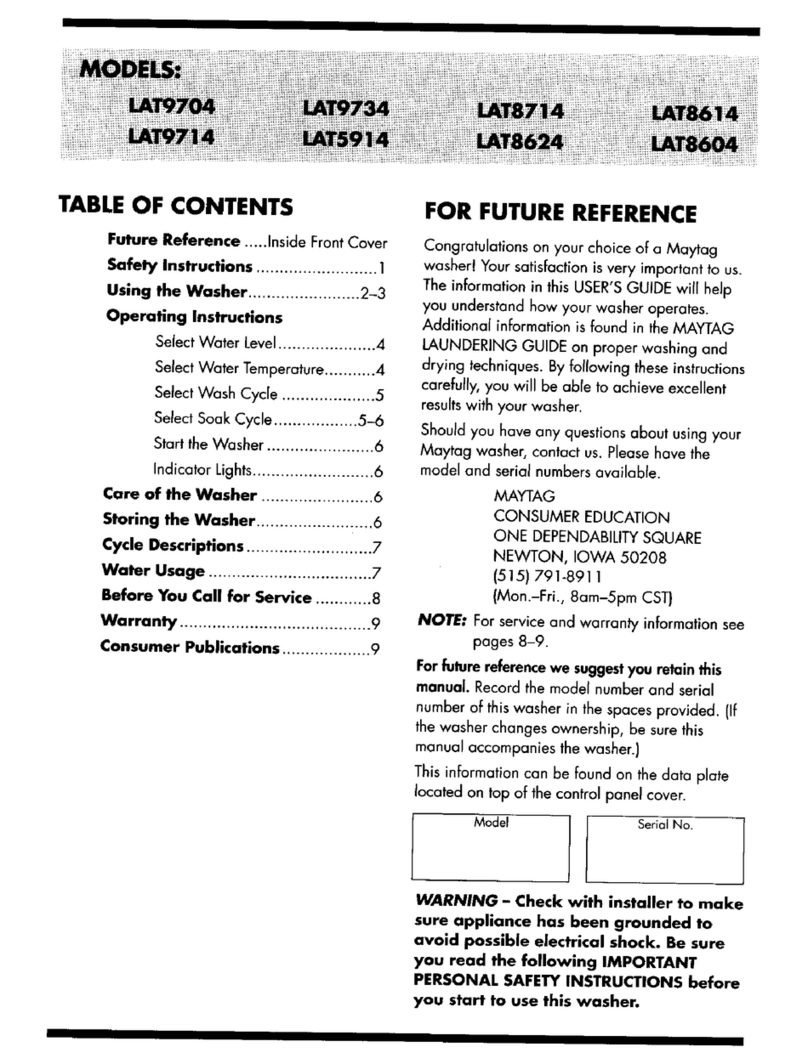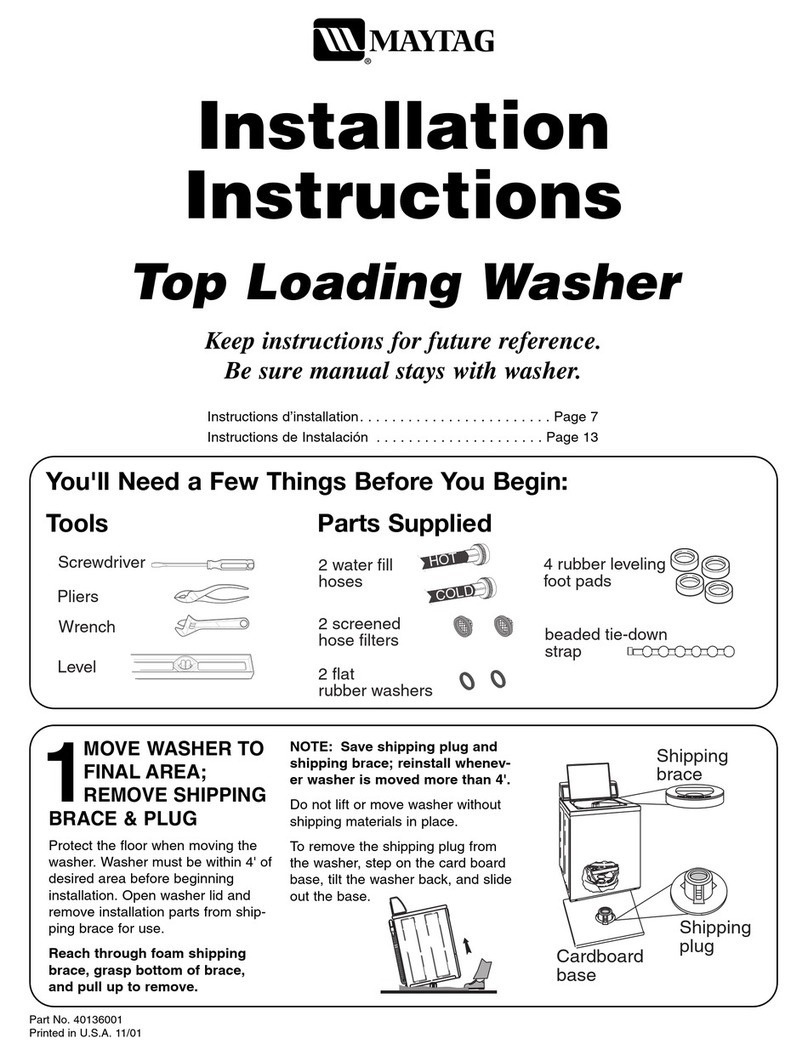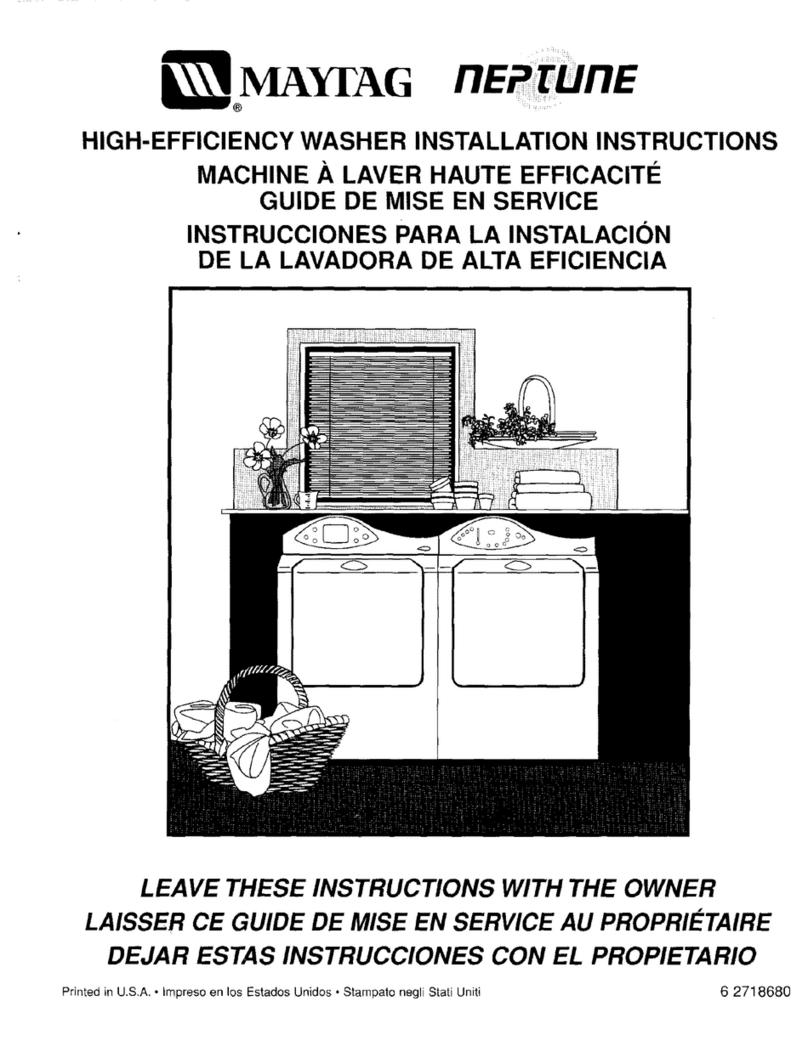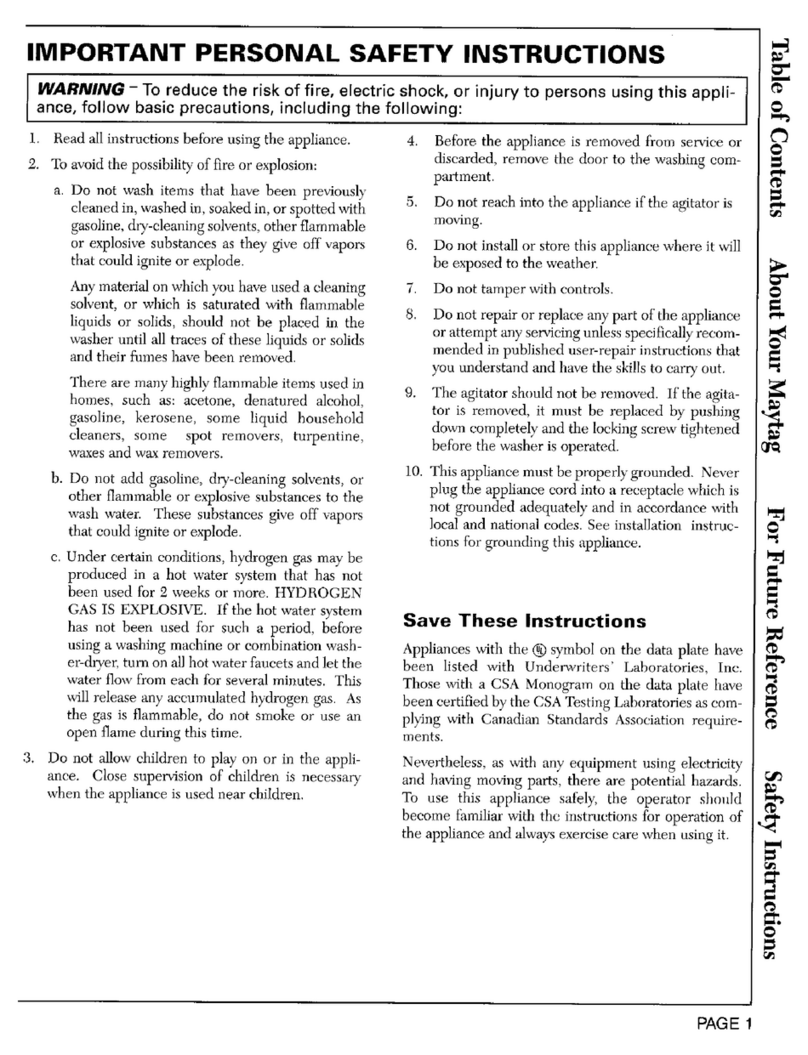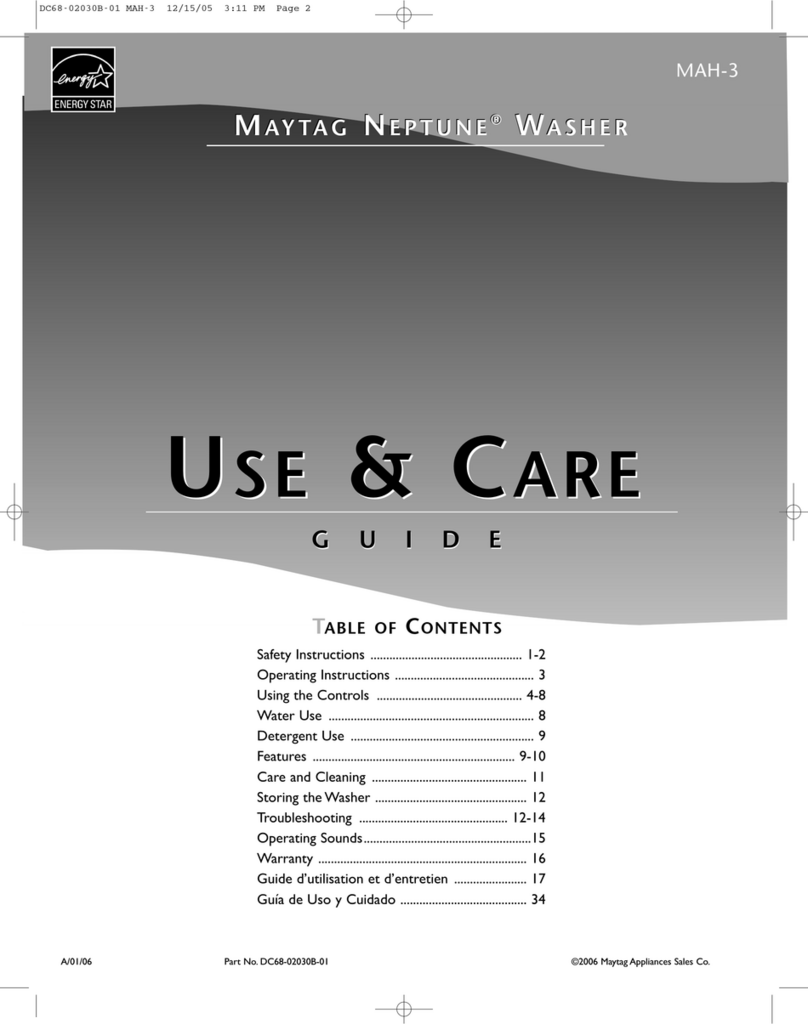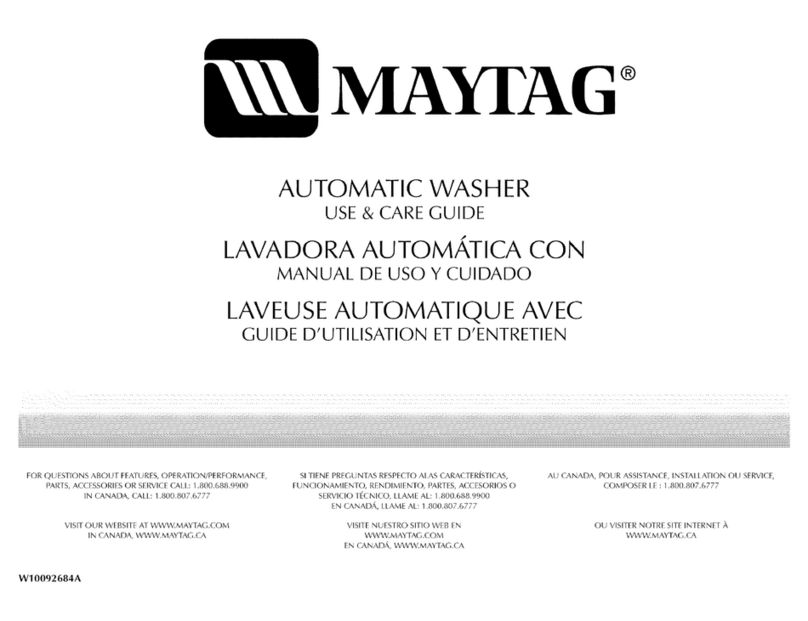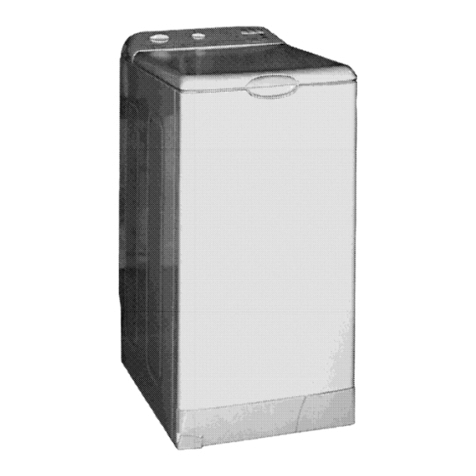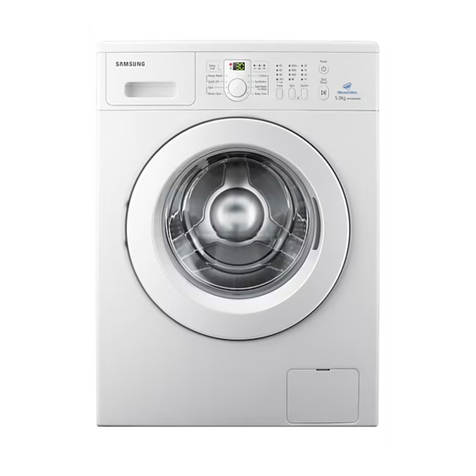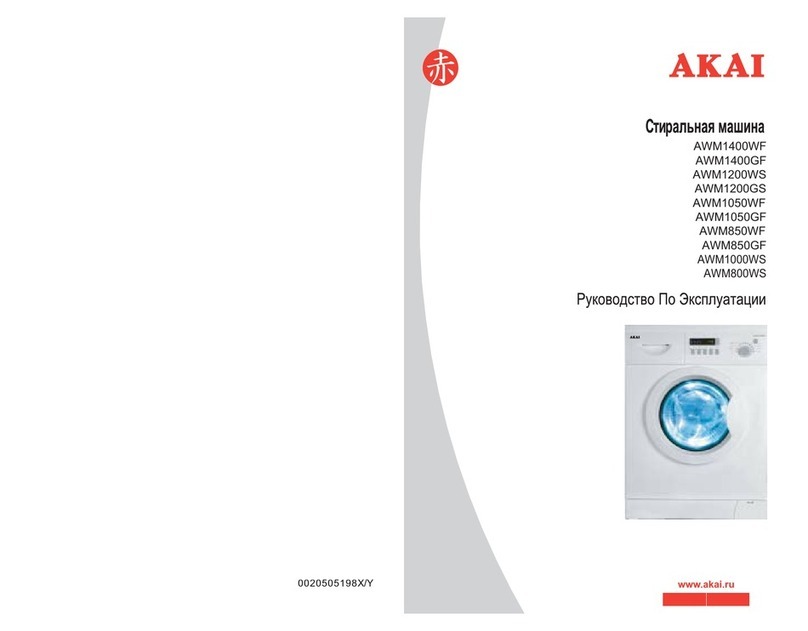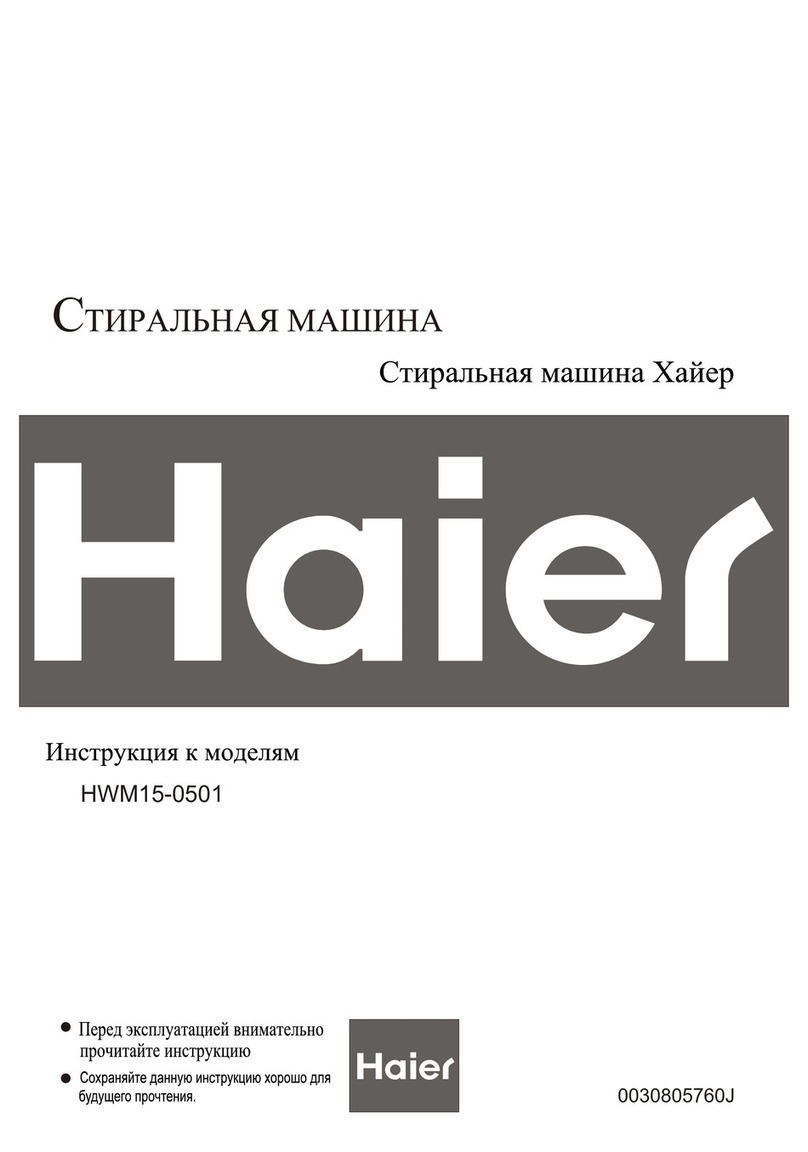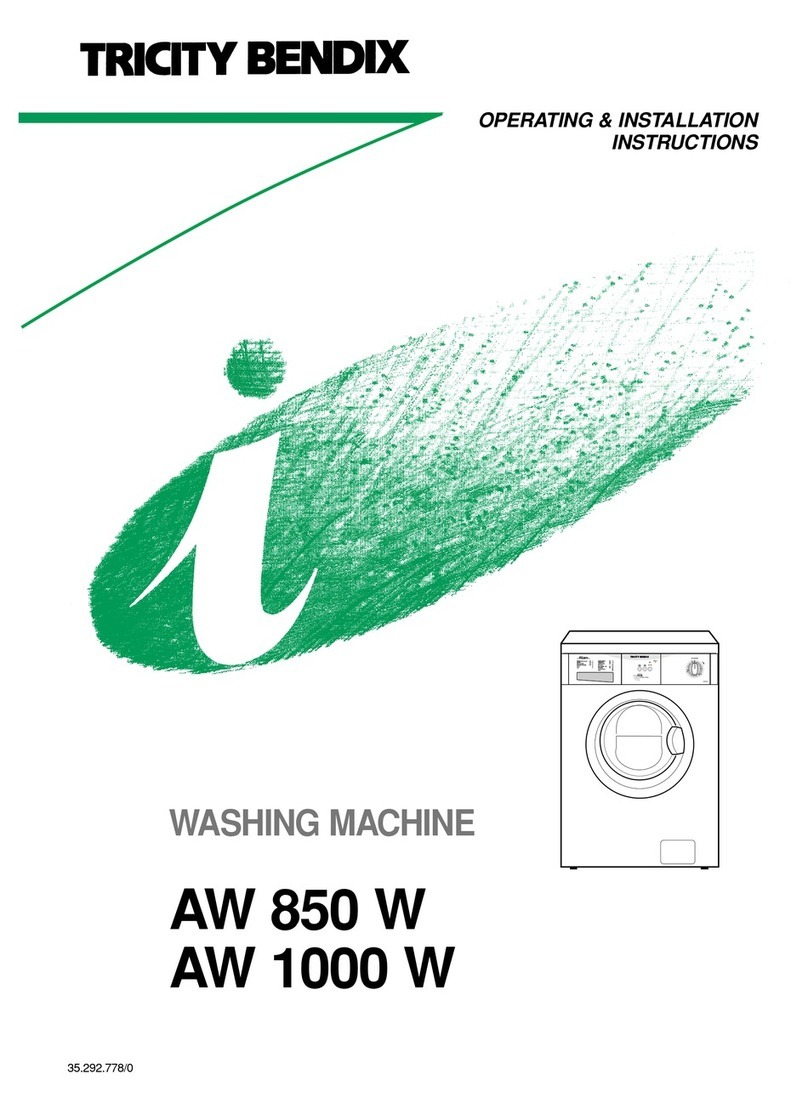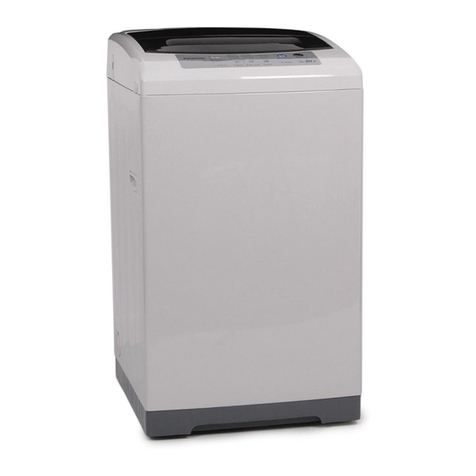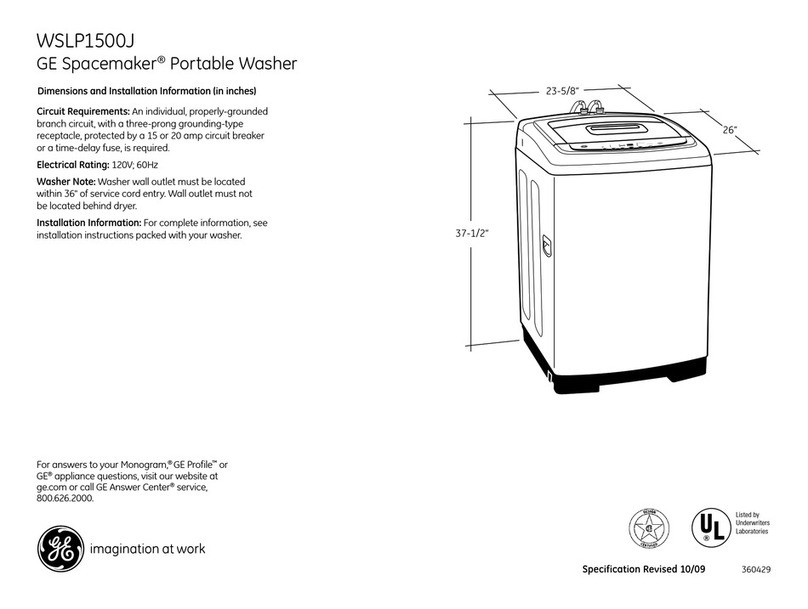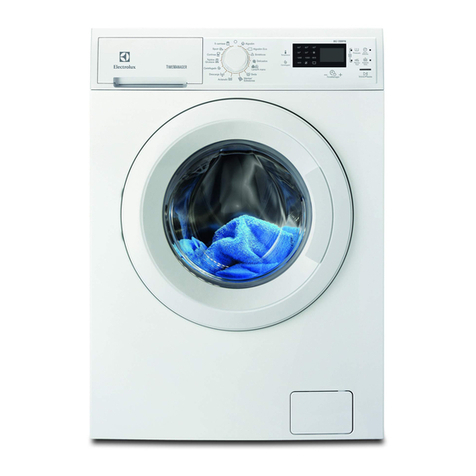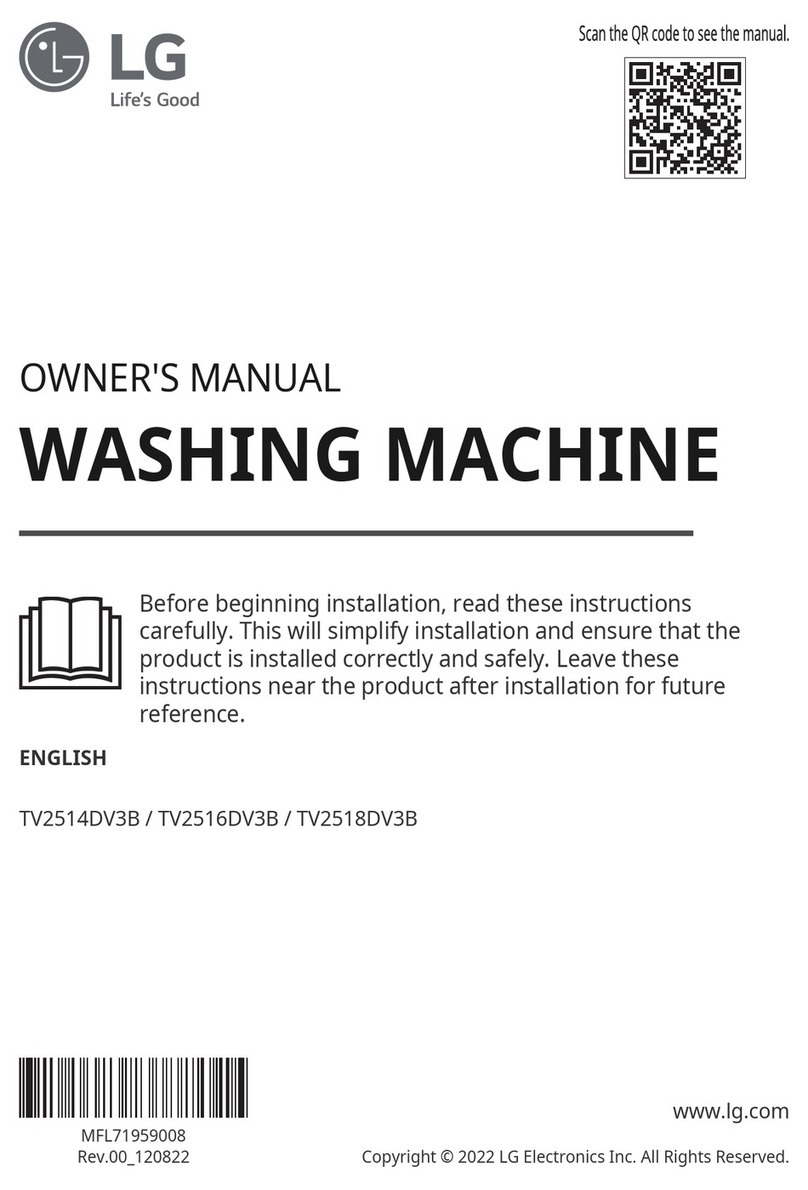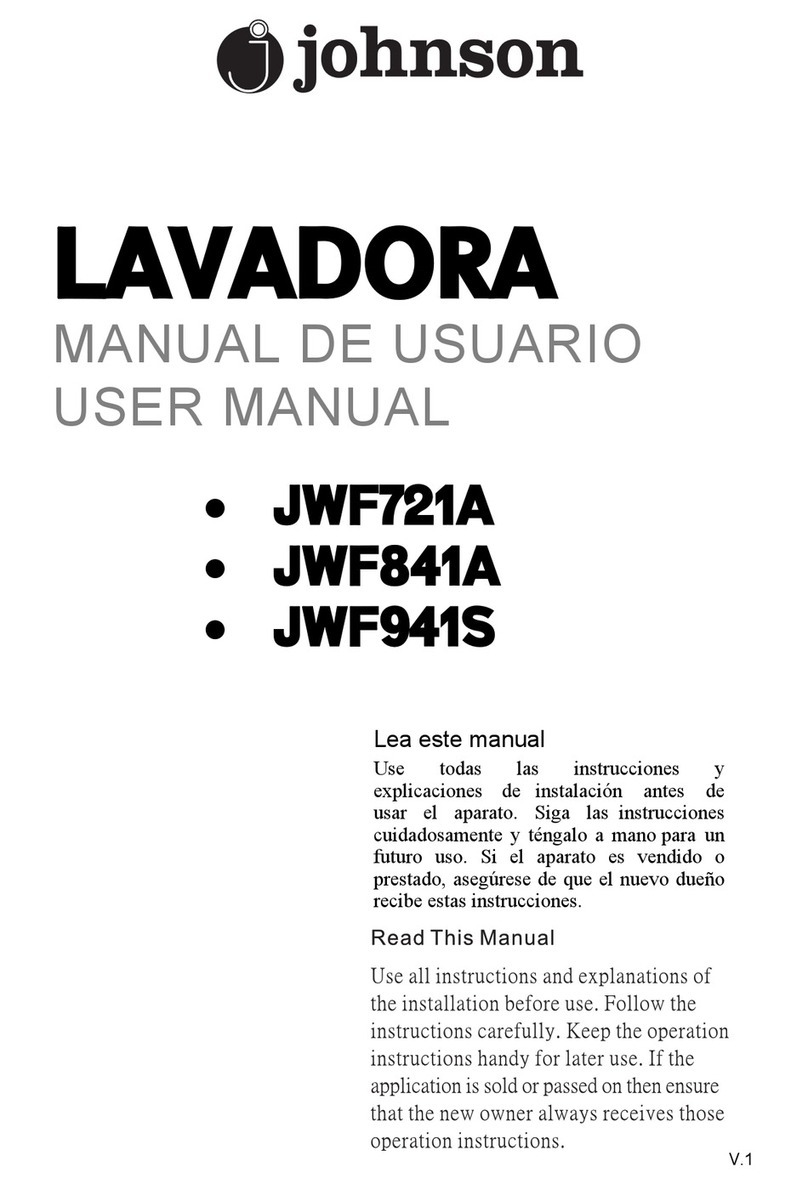CABINET DIMENSIONS
DRAIN FACILITY
Recommended height of standpipe is 36”.
The standpipe must be large enough to accept
a 1-1/2 inch outside diameter drain hose.
Without the 36” high elevation, water may
run out of the washer prematurely. A
possible sign that the drain hose has not been
elevated to proper height is if the washer fills
and drains at the same time.
The drain hose is attached at the factory.
A drain that will permit 23 gallons per minute
flow is required to evacuate the washer.The
standpipe should have a 1-1/2 inch minimum
internal diameter to prevent siphoning.
Tight connections between the drain hose and
the drain (standpipe, etc.) are not recommended
since they violate most plumbing codes. In
most cases where a tight connection is
demanded, an antisiphon valve should be
placed in the drain hose to prevent water from
siphoning from the washer or facility during
agitation. If required, an antisiphon valve
(Part No.12001586) is available from your
dealer or store.
Refer to the drain height drawing to determine
if special provisions must be taken for the drain
hose and pump:
ABetween the floor and 3 feet, the routing of
the drain hose is critical. Be sure that at
least some portion of the hose reaches a
height of 3 feet before running to the drain.
BBetween 3 feet and 5 feet is the recom-
mended drain height.
CFor drain heights greater than 5 feet, a
high-volume pump (Part No. 12001587)
may improve draining performance, espe-
cially if the unit provides a customized
cycle with a slow spin speed (refer to the
User’s Guide).
If the drain hose needs to be extended to
reach the drain facility, an accessory kit must
be obtained (Part No.12001585). If a high-
volume pump is purchased, the extension kit is
included. Contact your authorized Maytag
dealer for further assistance.
FLOORING
For best performance, the washer must be
installed on a solidly constructed floor. Wood
floors may need to be reinforced to minimize
vibration and/or unbalanced load situations.
Carpeting and soft tile surfaces are also
contributing factors in vibration and/or
tendency for a washer to move slightly during
spin cycle. Never install washer on a platform
or weak supported structure.
If installing on carpeting, be sure there is
adequate clearance between carpet and
moving parts beneath the washer.
LOCATION CONSIDERATIONS
It is recommended the washer never be
installed in areas where water may freeze,
since the washer will always maintain some
water in the water valve, pump and hose
areas. This can cause damage to belts, pump,
hoses and other components. Operating
temperature should be above 60°F.
COLD WEATHERSTORAGE
The following precautions should be taken if a
washer is to be stored where it would be
subject to freezing conditions.
1. Turn off the water supply, and remove the
inlet hoses.
2. Select a fill cycle and energize the water
valve by selecting a warm water setting.
A few seconds of fill is sufficient.
3. Disconnect from electrical supply.
4. Lower the drain hose to floor level and tip
the washer on its back to allow water to
drain from the pump and drain hose.
5. Return washer to upright position.
6. 30 day detergent dispenser should be
completely emptied (on models so
equipped).

